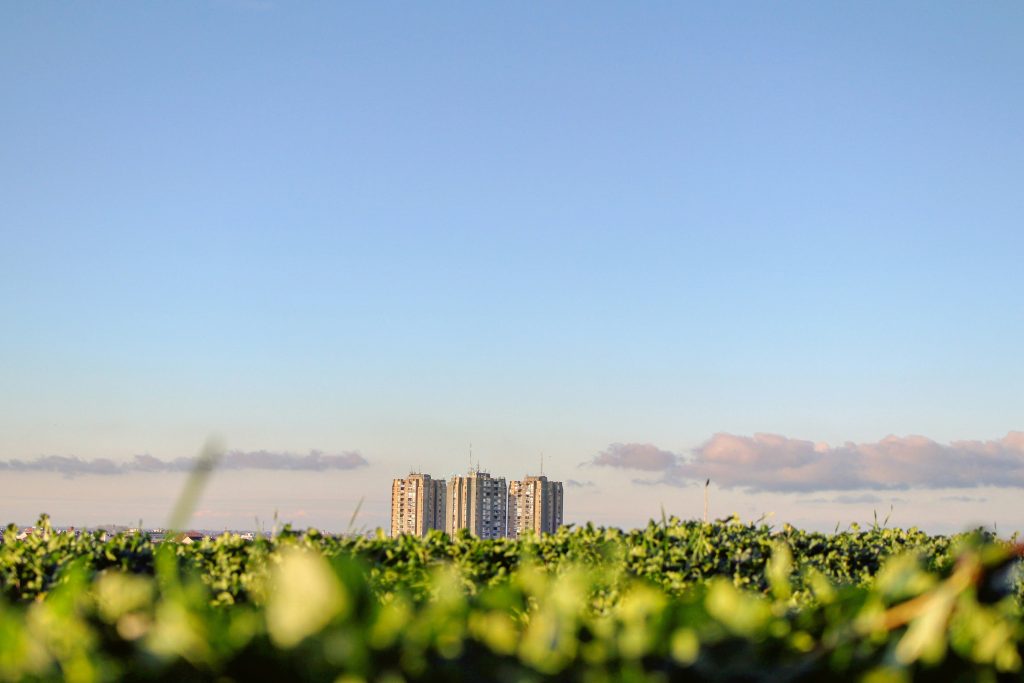- Green infrastructure, like green roofs and urban green spaces, mitigates urban environmental challenges.
- Sustainable transportation, including public transit and active modes, reduces emissions and congestion.
- Smart land-use planning and SWPPP solutions promote efficient resource use and water management.
- Energy efficiency measures and renewable energy investments reduce carbon emissions and enhance energy security.
- Community engagement empowers residents to contribute to sustainable urban development and resilience.
Urbanization is a defining feature of the modern era, with more people living in cities than ever. While cities offer opportunities for economic growth, innovation, and cultural exchange, they also present unique challenges, particularly regarding sustainability. As urban populations continue to grow, it becomes increasingly imperative to develop strategies that ensure cities are livable and environmentally sustainable. This article will explore five key strategies for promoting more sustainable urban development, from green infrastructure to community engagement.
1. Implementing Green Infrastructure
Urban areas often suffer from issues like heat islands, flooding, and air pollution, which can harm the environment and public health. Implementing green infrastructure is crucial for mitigating these challenges and promoting sustainability.
Utilizing Green Roofs and Walls:

Incorporating vegetation on rooftops and walls helps to reduce the urban heat island effect, improve air quality, and provide habitats for wildlife. Cities like Singapore and Copenhagen have successfully integrated green roofs and walls into their urban landscapes, demonstrating the effectiveness of this approach.
Promoting Urban Green Spaces:
Creating parks, green belts, and urban forests enhances cities’ aesthetic appeal and provides important ecosystem services. These green spaces help absorb carbon dioxide, mitigate flooding, and provide recreational opportunities for residents.
2. Encouraging Sustainable Transportation
Transportation is a significant contributor to urban emissions, making it essential to prioritize sustainable modes of transportation to reduce greenhouse gas emissions and alleviate traffic congestion.
Investing in Public Transit:
Developing efficient and accessible public transit systems encourages people to leave their cars at home, reducing traffic congestion and emissions. Cities like Tokyo and Zurich have extensive and reliable public transportation networks that serve as models for others to follow.
Promoting Active Transportation:
Encouraging walking, cycling, and other forms of active transportation reduces emissions, promotes physical activity, and improves public health. Implementing bike lanes, pedestrian-friendly infrastructure, and bike-sharing programs can make cities more walkable and bike-friendly.
3. Fostering Sustainable Land Use
Effective land-use planning plays a crucial role in creating sustainable cities by optimizing space, preserving natural resources, and promoting mixed land-use development.
Implementing Smart Growth Principles:
Smart growth principles prioritize compact, mixed-use development that reduces urban sprawl, preserves green space, and promotes walkability. By concentrating development in existing urban areas, smart growth strategies minimize the need for new infrastructure and transportation networks.
Incorporating Sustainable Stormwater Management:
Sustainable stormwater management practices, such as green infrastructure and low-impact development techniques, help mitigate the adverse effects of urban runoff on water quality and aquatic ecosystems. Implementing Stormwater Pollution Prevention Plan or SWPPP solutions, such as permeable pavement and rain gardens, can reduce the volume and velocity of stormwater runoff, minimizing pollution and protecting water resources.
4. Promoting Energy Efficiency and Renewable Energy

Transitioning to clean and renewable energy sources is essential for reducing carbon emissions and mitigating the impacts of climate change. Cities can lead the way by implementing energy-efficient measures and investing in renewable energy infrastructure.
Improving Building Efficiency:
Buildings account for a significant portion of energy consumption in urban areas, making it crucial to improve their energy efficiency through measures such as better insulation, energy-efficient appliances, and passive design strategies.
Investing in Renewable Energy:
Cities can reduce their reliance on fossil fuels by investing in renewable energy sources such as solar, wind, and geothermal power. By generating clean energy locally, cities can reduce greenhouse gas emissions and enhance energy security.
5. Empowering Community Engagement and Participation
Sustainable urban development requires collaboration and engagement from all stakeholders, including residents, businesses, and local governments. Empowering communities to participate in decision-making processes fosters a sense of ownership and responsibility for the future of their cities.
Encouraging Citizen Science Initiatives:
Citizen science initiatives engage residents in collecting data on environmental issues such as air and water quality, enabling communities to identify problems and advocate for solutions. By empowering citizens to take an active role in monitoring their environment, cities can foster a sense of environmental stewardship.
Supporting Community-Based Initiatives:
Supporting grassroots initiatives and community-led projects promotes social cohesion and resilience while addressing local sustainability challenges. Whether it’s community gardens, renewable energy cooperatives, or neighborhood clean-up efforts, these initiatives empower residents to take action and create positive change.
Sustainable urban development is imperative for creating resilient, equitable, and environmentally sustainable cities. By implementing strategies such as green infrastructure, sustainable transportation, and community engagement, cities can mitigate the impacts of urbanization and create thriving communities for future generations. As we continue to confront the challenges of rapid urbanization and climate change, it’s essential to prioritize sustainability in urban planning and development to build truly livable cities for everyone.

